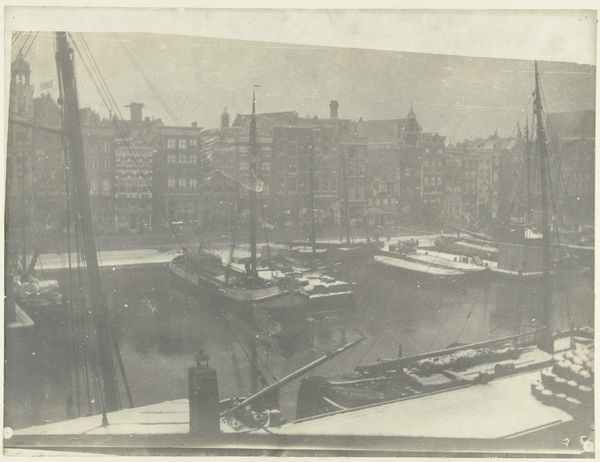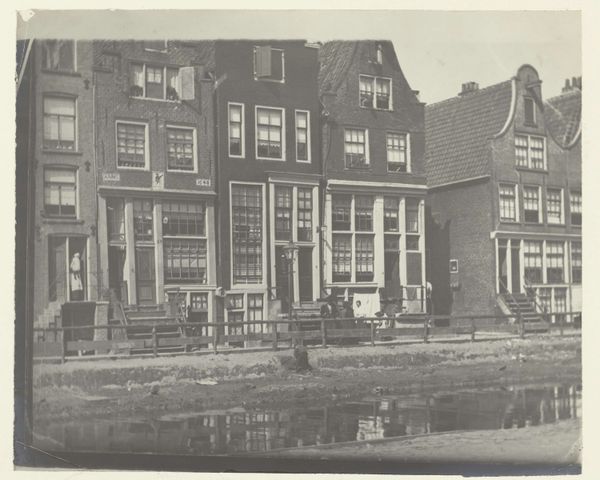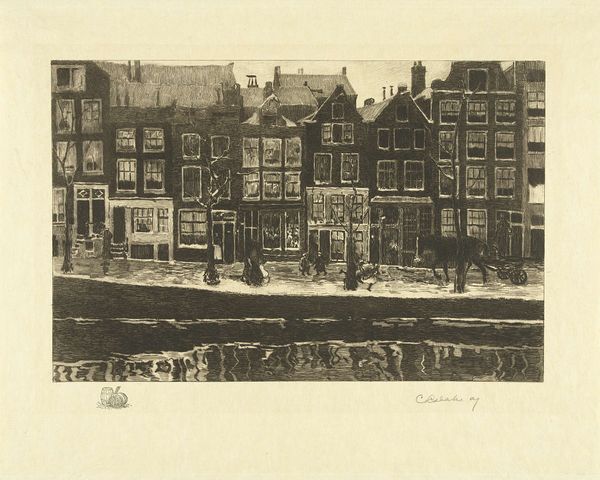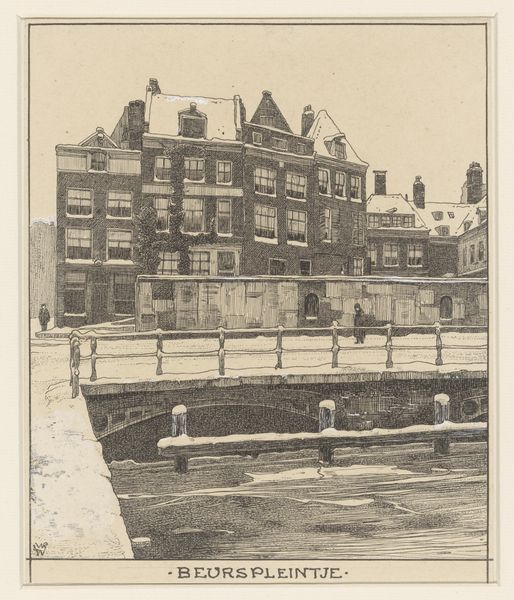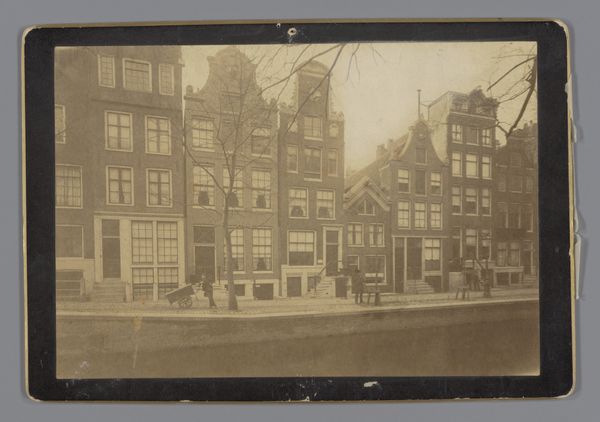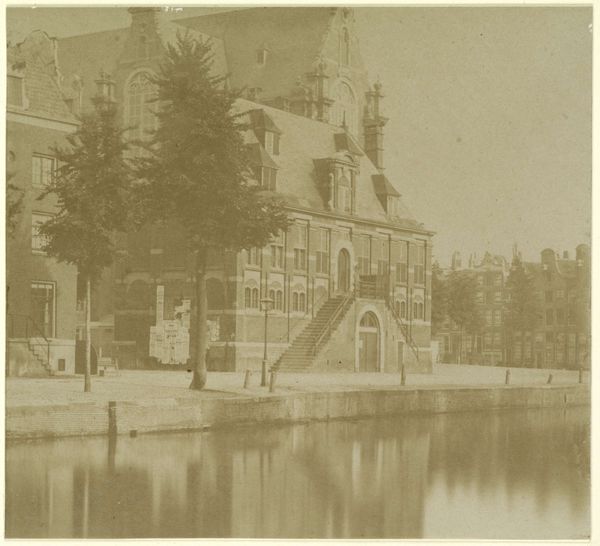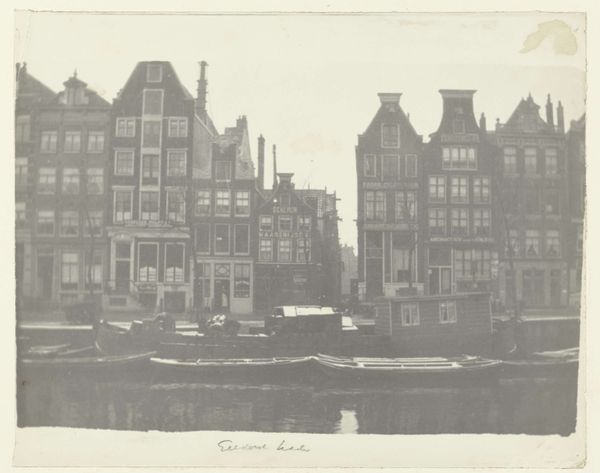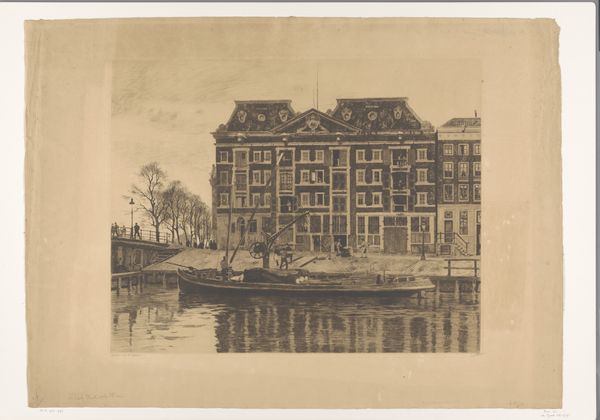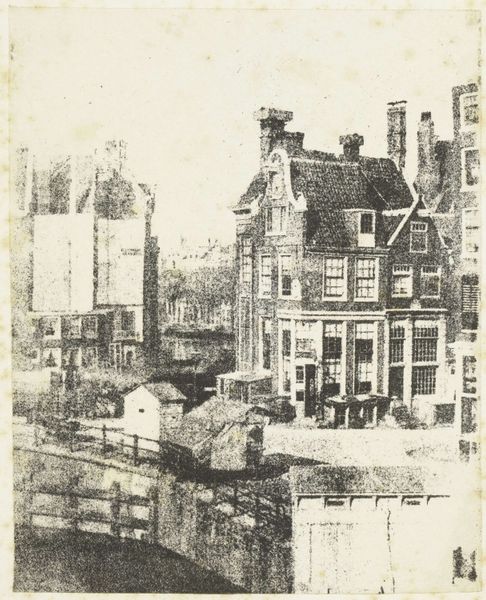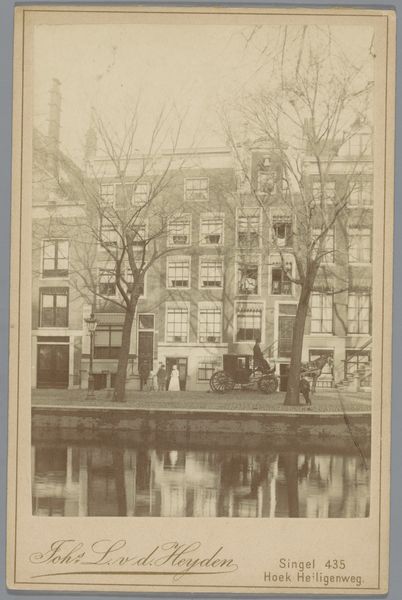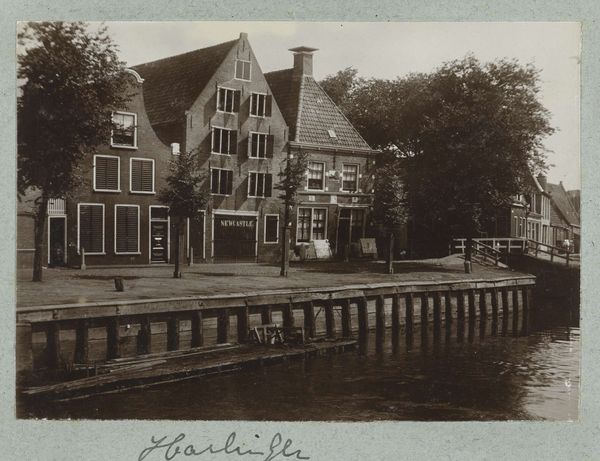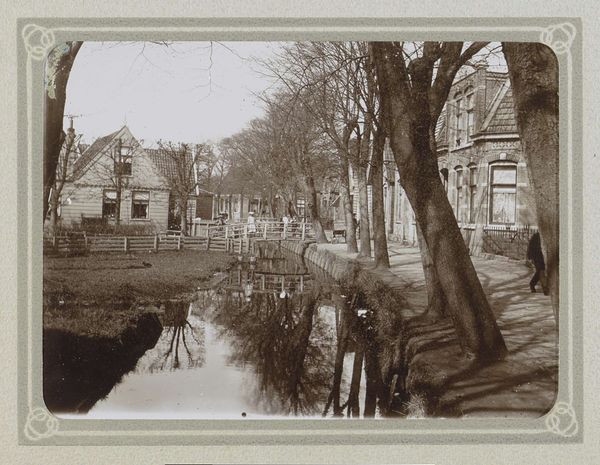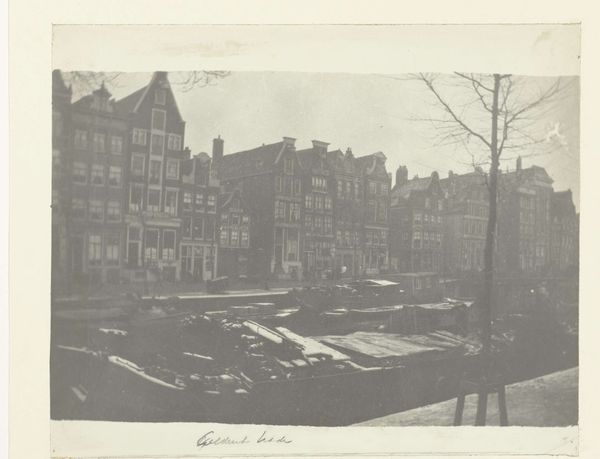
Reproductie naar een foto, schilderij, tekening of prent c. 1860 - 1915
0:00
0:00
diversevervaardigers
Rijksmuseum
photography, gelatin-silver-print
#
photo restoration
#
charcoal drawing
#
photography
#
gelatin-silver-print
#
19th century
#
cityscape
#
realism
Dimensions: height 104 mm, width 130 mm
Copyright: Rijks Museum: Open Domain
Curator: This gelatin-silver print, titled "Reproductie naar een foto, schilderij, tekening of prent," is attributed to various makers and was likely created between 1860 and 1915. My initial reaction? A subdued yet detailed glimpse into Amsterdam. It's mostly muted greys, giving the scene a tranquil, almost dreamlike quality. Editor: Yes, the subdued palette and sharp details pull us into a different time. What I find interesting here is that it is labelled "Reproduction of a photograph, painting, drawing, or print" - the gesture here implies a negotiation around the mechanical reproduction and manual labour inherent in artmaking at the turn of the century. Who was replicating the image and how were they working? Was it considered fine art, commercial production, or merely technical reproduction? Curator: I completely agree. It really makes us think about how the act of photographic reproduction, especially with this gelatin-silver process, impacted artistic practices at the time. The medium itself suggests mass production and democratization, but also evokes a sense of craft through the hands-on chemical development process and manual print production. Editor: Right. This photographic view captures a cityscape, possibly in winter. Look at the reflections of buildings in the water and the snow on the rooftops and barges – these little touches make one curious about urban development and water infrastructures at the time, as well as how those shaped lives for the working class, not only wealthy merchants. How are cityscapes like these both idyllic and deeply class-dependent? Curator: Indeed. The clarity and realism provided by the photographic medium documents not just the grand façades, but also a lived-in urban reality. These reproductions would have made these vistas available to a wider audience. How did this increased access change perceptions of the city, or further class divides in how one inhabits and engages with such an environment? Editor: Perhaps, in thinking about its creation and audience, this "reproduction" ultimately tells us much more about societal power dynamics than the cityscape itself. Thank you for making that so palpable! Curator: Thank you. Analyzing this piece has certainly offered fresh perspectives on labour, access and social commentary inherent in 19th-century image production.
Comments
No comments
Be the first to comment and join the conversation on the ultimate creative platform.
